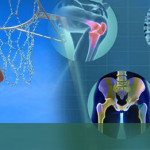Tag Archives: Total Arthroplasty in India Reviews

Total Arthroplasty In India Things To Consider While Going For The Surgery

Planning your medical trip to India is a very simple process with Joint Replacement Surgery Hospital India
- You just need to fill in our enquiry form and one of our executives will contact you soon.
- +91-9860432255 Call us at the given contact number for any assistance.
- Complete information regarding surgery is provided on our website.
Total Arthroplasty Overview
The process of arthroplasty is the orthopedic surgical procedure where the musculoskeletal joint is replaced. It is also remodeled or realigned if required according to the injury caused. The arthroplasty is a procedure which is known as an elective procedure which is done in order to relieve the pain and also to restore the functioning of the joints. The joint replacement is considered when there is a severe damage to the joints, bones, tissues or the surrounding muscles. The joint replacement is only suggested after all types of orthopedic treatment fails. In most of the cases the surgical intervention is the last resort where the pain increases and movements of the person is restricted. There are many medical colleges and institutes which provide the facility of Total arthroplasty in India.
How do I know if I am a good candidate for Total arthroplasty Procedure?
If you are suffering from osteoarthritis – this essentially means pain in the joints, especially knees, ankles, hips, shoulders and finger joints. The joints of the body have worn down because of the pain, then you should consider joint replacement surgery. In most of the cases the joint replacement surgery has a high success rate provided the necessary precautions are taken after the surgery. In India there are many well-known hospitals that conduct the joint replacement surgery, which is Affordable Total arthroplasty in India.
Check out the Patient Testimonial, where the patient shares about their success stories from treatments through Joint Replacement Surgery Hospital India.
Hello, I am Felix Birgen from Nigeria. I got total arthroplasty in India through Joint Replacement Surgery India. I was experiencing excruciating pain in my knee and after consultation with my doctor, I was asked to undergo the surgery. While researching, I came across this healthcare consultant and after a series of conversation over the phone and mails, got my appointment fixed with them. I flew down to India and a young and pleasant executive came to receive me. I was taken to the hospital, where I met my surgeon who made me easy and comfortable by clearing my doubts. The nurses and the hospital staff were efficient and very caring. I really appreciate the efforts put in by your team for arranging my surgery at such reasonable price. My surgery went well. I would recommend you to anyone looking to get surgery at pocket-friendly prices.
Total arthroplasty Procedure & Recovery & Effectiveness
The most common surgery seen is hip surgery is a procedure where the hip joint of a person is replaced with a prosthetic implant. The hip surgery can be performed either for the whole of the hip or a portion of it. These types of joint replacements are done to relieve the arthritis pain or to fix any damages which have occurred in the joints due to any accidents. The hip surgery is the most common orthopedic surgery but the results are varied in patients. Some may get cured fast and few may take time for recovery.
Why Opting Total arthroplasty is necessary?
All the Joint Replacement Surgery have an excellent success rate; but one should keep in mind that joint replacement is a major surgery. Proper post operation care should be taken so that the patient can continue for a longer time with the joint replacement. There are some risks which are to be kept in mind after the surgery is done, which can be understood with the Free Consultation Total arthroplasty in India. They are – infection in the body of the person; dislocation of the joint; nerve damage, urinary tract infections, rejection of the graft and pneumonia. Besides these risks some of the most severe risks would be heart attacks, embolisms and strokes. If a person has just recovered from any kind of major illness or surgery, or any injury then they should not immediately consider getting joint replacement done. Those patients who have serious heart ailments should not opt for joint replacement. Those patients who are prone to infections faster also should take extra care while going for joint replacement surgery.
Why to choose an Indian Hospital for your Total arthroplasty?
The hospital also provides free details about various science research activities. According to the Total arthroplasty in India reviews they also provide essential details on finger joint replacement surgery, which is useful for people who intend to get their surgery done.
Total arthroplasty Cost in India
There are many patients who come from various corners of the world since you can get Low cost Total arthroplasty in India as compared to other countries. The overall expenses of the operation and post-operative care are very low and reasonable.
If you are really seeking Total Arthroplasty, kindly fill up the form for a free consultation with our surgeons. You will be provided with thorough analysis and suggestions regarding the Total Arthroplasty you are seeking.
FAQ’s
Joint Replacement Surgery Hospital India offers highest quality bone and joint health care with attentiveness, care and compassion to meet the needs of the patients and their loved ones. The medical team includes board-certified orthopedic surgeons who are familiar with all the aspects of the musculoskeletal system. Our hospital uses the most advanced technologies available for the orthopaedic procedures and has a lower complication rate.
Success is difficult to assess. The most important factor relates to your expectation of success. Total joint replacement is one of the most successful operations when performed in the right patient. While total joints have seen great advancement they are still not better, than your native joint prior to arthritis. 98% of patients will answer yes to the following three questions 1 year after surgery:
- Are you glad you had the surgery?
- Did it fulfil your expectations?
- Would you do it again?
There will be individual variations in recovery time. Most will be able to walk without an assist device (crutches, cane, walker) in a few weeks and return to normal function by 3 months. Wearing in and improvement may occur over the first year.
While some centers are attempting to make joint replacement an outpatient procedure (I do offer outpatient arthroplasty procedure in appropriate candidates), I feel most patients will require 1-2 days of hospitalization. Pre-existing medical conditions (heart problems, diabetes, hypertension, kidney problems, pulmonary problems) may lengthen your hospital stay. Patients will be discharged home when their pain is well controlled on oral medications and they have been cleared by physical therapy.
Most will be discharged home and participate in an outpatient physical therapy program. Most insurance programs do not recognize total joint replacement as criteria for admission to a rehabilitation facility unless extenuating medical conditions exist. If social or health issues prevent discharge home, you may be transferred to a skilled nursing facility with therapy. Please note that if you are considering a rehabilitation unit after surgery, it would be advisable to visit prior to surgery.
For surgery on the right leg it is recommended that you not drive for 4 weeks. You may drive thereafter if you feel comfortable applying enough force to brake suddenly and you are no longer taking narcotics for pain control. For left leg surgery, you may drive as soon as you feel comfortable and are no longer taking narcotics.
As soon as you feel comfortable. It is recommended that you stretch and walk each hour during long trips to prevent blood clots in your legs (deep venous thrombosis).
For a sedentary job (ex. Deskwork) you may return in 2-4 weeks. For more labor intensive work you should plan on at least 3 months. Average time to return to work across all jobs is just under 9 weeks.
You may return to all low-impact activities when you feel comfortable (walking, golf, swimming, bicycling, skiing). You should avoid high impact activities such as running and jumping.
The literature reports a 0.5-1% chance of requiring additional surgery each year. So at 10 years, 90-95% are functioning normally and at 20 years 80-85% remain normal. After 20 years the success declines more rapidly. There is promising data that the newer components may exceed these expectations.
Knee replacements rarely notice any real or functional differences. For hip replacements a leg length discrepancy may occur requiring the use of a shoe lift. The chance of this occurring is increased by a prior leg length difference, severe hip arthritis, and/or severe back issues. For hip replacements, achieving stability of the hip joint super-cedes exact equalization of leg lengths.
I feel it is very beneficial to see or at a minimum notify your primary physician to ensure that your health status is optimized prior to surgery. If you do not have a primary physician then we will assist you in obtaining one for evaluation.
Ordinarily no. If however you suspect you have a dental infection, have poor dental hygiene, or have not had a dental check up in 12 months then it would be advisable to proceed with a formal dental examination.
Complication rates vary. The most important risk of complications is related to the health status of the patient. Patients with health issues are at greater risk of complications. Some of the most important include, but are not limited to; diabetes, heart disease, pulmonary disease, kidney disease, rheumatoid arthritis, vascular disease and obesity. Diabetics should have optimum blood glucose control and those whose HbA1c are elevated will likely be postponed. A patient who is found to have active infections or illnesses should delay surgery until the issue is resolved. The risk of infection at our facility is below the national average. A national average being between 1-2%.
Ultimately that decision is made between you and the anesthesiologist. I however, strongly recommend you consider a spinal anesthetic. Spinal anesthesia is associated with less blood loss, lower risk of blood clots, lower risk of stroke, less post-operative nausea, less pain, and faster recovery (many of these claims are debated).
Most patients receive a Foley catheter that remains in place until the day after surgery. There are some rare exceptions.
Having IV access for the first day is important for the rapid administration of medications. The patient will receive IV antibiotics 1 hour prior to surgery and usually no longer than 24 hours after surgery.
National statistics are 12% need for transfusion for knee replacements and 19% for hip replacements. Our facility employs tactics to decrease the need for blood transfusion. Our transfusion rate is well below 5%. We can usually identify who might require a transfusion before surgery (persons who are anemic prior to surgery or who have more complicated medical or surgical issues).
I prefer starting out with narcotics and then decreasing their use based on patient comfort. I have had patients not use narcotics, but it is very important that the patients pain be well controlled so that they may participate and progress with therapy. Playing “catch up” on pain control is not ideal. Some patients do react poorly to narcotics and final pain medication treatment will be tailored post-operatively. Patients who have been on narcotics leading up to surgery may experience increased difficulties with pain control.
Once a waterproof dressing is applied you may shower. Typically the day after surgery. You should keep a dressing on the incision for at least 1 week.
Typically 3-4 weeks after surgery. I favor closer to 4 weeks just to be on the safe side.
Often I use an absorbable suture placed below the skin and Dermabond (super glue for the skin) on top and therefore there are no sutures/staples to remove. If, however, your skin condition required sutures/staples they are typically removed by 10-14 days.
It is common to require pain medication for up to 2-3 months. Initially you will be taking a narcotic. You may choose to switch to an over-the-counter medication such as ibuprofen or acetaminophen as soon as you are comfortable. Most discontinue narcotic by 4-6 weeks. Requiring narcotics beyond 3 months is unusual.
For knee surgery the duration is 10-14 days. For hip surgery the duration is 21-35 days. I typically use Xarelto which is an oral pill. It is easy to monitor and administer and has a very high safety margin. The medication is expensive, but it is necessary. An alternative is an injectable anti-coagulant but it too is expensive.
Coumadin (Warfarin) is a much cheaper option but is difficult to manage and requires regular blood draws to monitor its effectiveness. I typically reserve its use for persons who are on it for another reason. Recently the AAOS has demonstrated that Aspirin therapy may be safe in select individuals, but I feel our elevation precludes its routine use. I do recommend patients consider Aspirin 325mg daily after completing the Xarelto or other chosen agent for 60 days unless you have a contraindication to its use. Your specific anti-coagulant and duration of use will be based on your risk of developing clots against your risk of having a bleeding event.
If you are taking coumadin you should avoid alcohol. Only very modest consumption should occur if you are taking narcotics (I do allow for a glass of alcohol when in the hospital). Beyond this, you may consume in moderation at your own discretion.
I no longer recommend iron post-operatively as its benefit has been called into question and it can contribute to constipation, which is common after surgery and while taking narcotics.
Initially, ice is most effective at reducing swelling. After 2 weeks you may use whichever makes you most comfortable.
I prefer the use of the compressive stockings (TED hose) until the first postoperative visit (2 weeks). After discontinuing, if your ankles swell, then you should use them until this normalizes. For long trips they are recommended for 3 months following surgery.
I recommend going upstairs leading with your non-operative leg and going down stairs lead with your operative leg. “Good leg up, bad leg down.” This will be taught to you by our therapy team.
As a matter of habit I use formal therapy, but in select situations you may not need therapy. Initially they may need to come to you until you are able to present to an outpatient program. Therapy can be essential to short and long term improvement. Typical duration 6-8 weeks.
For knee replacement and anterior hip replacement as soon as you are comfortable. For posterior hip replacement you should wait for at least 6 weeks and focus on your hip precautions.
It is not uncommon. Factors such as pain, narcotic usage, increased dependency on others, and limitations in mobility can contribute to mild depression. These feelings usually subside as you recover. If these feelings are pervasive or persistent please bring them up to me or your primary physician.
This is a very common complaint. Over-the-counter Benadryl or Melatonin may be effective. If not you may require a prescription medication.
It is very common. A stool softener (Colace over-the-counter) is recommended. Drink plenty of water. Our hospital provides a post-operative plan to assist with constipation. It is very important that if you have painful constipation that you cease all narcotic consumption and notify us or present to an emergency department. If a long acting narcotic is prescribed it is the first agent that should be stopped until constipation is improved.
Wallet cards indicating surgical implants are no longer recognized. You will have to inform the security officer of your surgery and may be asked to demonstrate the incision so wear appropriate apparel. Over 1 million total joint replacements are performed each year, so you are not alone.
Avoid any invasive procedures for 6 weeks after surgery. For simple dental cleaning, antibiotics are not required. For invasive procedures it has been recommended to take antibiotics prior to the procedure for 2 years after surgery. The most recent update states antibiotics are not required unless the patients immune status is compromised. I recommend antibiotics for dentistry of any form for the first two years and then at patient discretion. If your dentist has a recommendation, then you should take that into consideration as well.
Simple “nicks” do not require antibiotics, but if you have an injury that is obviously infected or requires medical assistance then you should seek medical attention and notify the provider that you have a joint replacement. Viral conditions do not require antibiotic coverage. If you have a bacterial infection you should consult your primary physician.
You can most definitely choose hotels as per your convenience to you and your budget.
You can talk to the doctor and satisfy all your medical queries. You can also send us your queries for answers from the top doctors.
To know about the procedure of getting an Indian Medical Visa, please go to our website where you will find all the details regarding the initial procedure. You can also send us a query regarding the same.
Many hospitals in India have language translators to help you communicate better and effortlessly with the doctors and medical staff.






